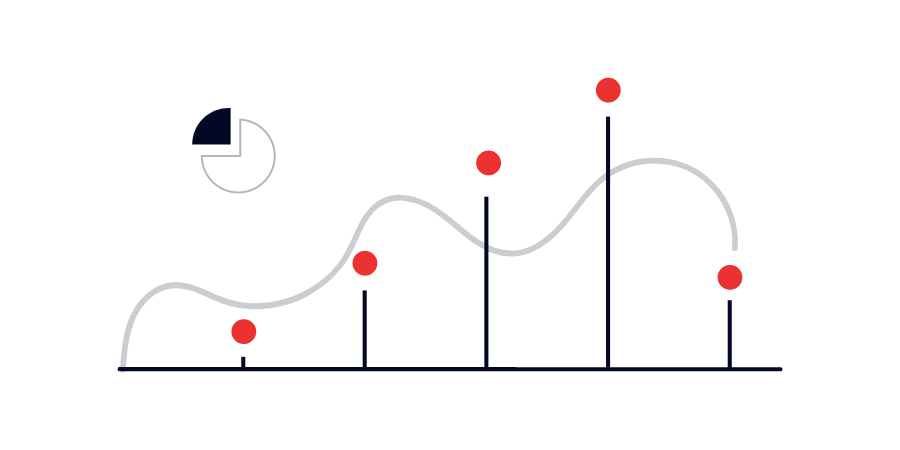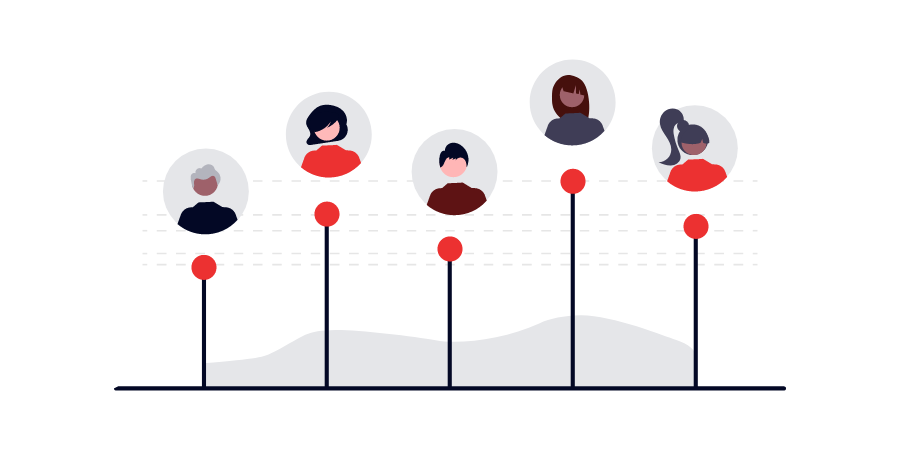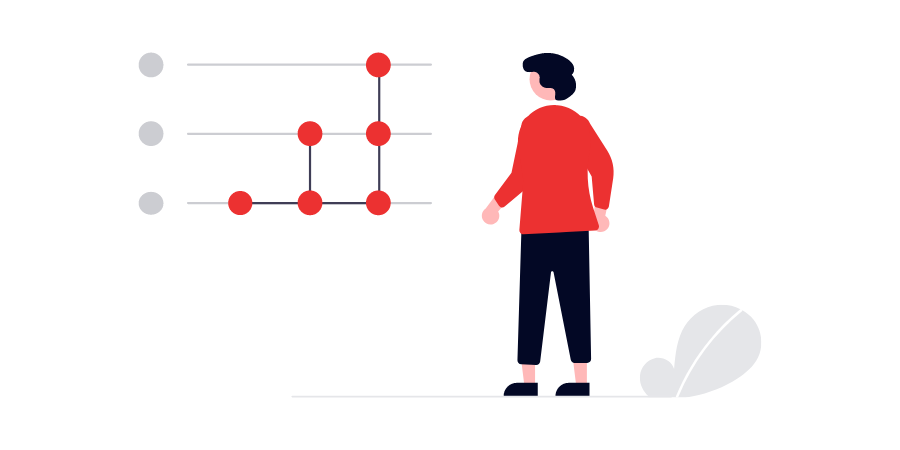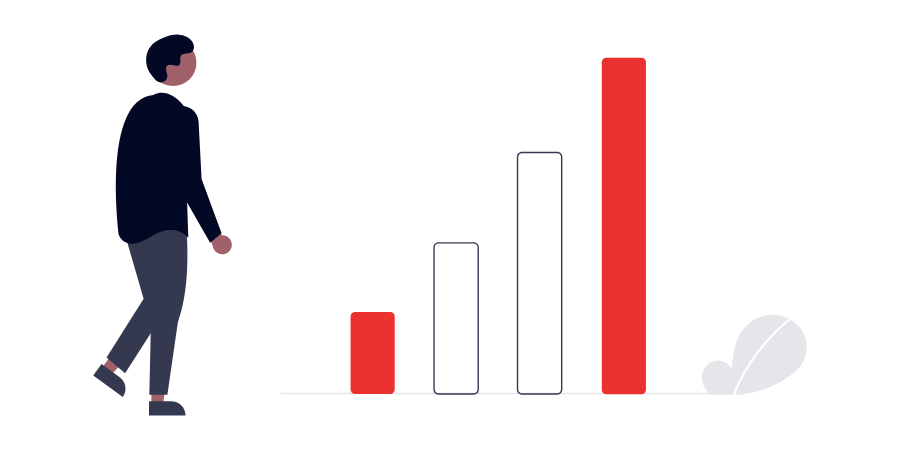There’s a metric that often separates the good products from the great ones: retention. While acquiring new customers might give you a temporary high, it’s the ability to keep them coming back that truly defines long-term success. As Casey Winters, former head of growth at Pinterest and Grubhub, aptly puts it, “Great retention is the scalable way to grow a product. It’s the best indicator of product-market fit, it is the most important factor in a user’s lifetime value, and high retention drives all of the best acquisition strategies.”
But what exactly is retention? At its core, retention refers to a company’s ability to keep its customers over time. It’s not just about preventing churn; it’s about creating such value that customers can’t imagine their lives (or businesses) without your product. For product managers and leaders, understanding and improving retention is not just a nice-to-have – it’s a critical skill that can make or break your product’s success.
The importance of retention cannot be overstated. Research from Bain & Company suggests that increasing customer retention rates by just 5% can increase profits by 25% to 95%. In a world dominated by subscription models and software-as-a-service (SaaS) offerings, where switching costs are often low, the ability to retain customers has become more crucial than ever.
However, despite its importance, retention remains one of the least understood metrics in product management. Why? Because unless you’re a growth expert or an experienced investor, you’re often relying on anecdotes, dated blog posts, and misguided benchmarks. This essay aims to change that.
Over the next several sections, we’ll dive deep into the world of retention. We’ll explore how to measure it accurately, understand the psychology behind why customers stay (or leave), and uncover data-driven strategies to improve it. We’ll look at product-led tactics that can significantly boost retention and discuss how to build a retention-focused culture within your organization.
Whether you’re a product manager at a startup trying to achieve product-market fit or a product leader at an established company looking to accelerate growth, this essay will provide you with actionable insights to elevate your retention game. By the end, you’ll have a comprehensive understanding of not just why retention matters but how to systematically improve it.
Understanding Retention Metrics

Numbers tell stories. And when it comes to retention, these stories can be both illuminating and, at times, brutally honest. As product leaders, we often find ourselves navigating a sea of metrics, each promising to be the north star that guides our decisions. But in this vast ocean of data, which metrics truly matter for retention?
Let’s start with the most fundamental: the customer retention rate. At its core, this metric tells us what percentage of our customers stick around over a given period. It’s a simple concept, but don’t let that simplicity fool you. This number can be a powerful indicator of your product’s health and your customers’ satisfaction.
Imagine you’re running a SaaS company. You start the year with 1000 customers, gain 200 new ones throughout the year, and end with 800. Your retention rate would be 60%. This means that while you attracted new customers, you lost 40% of your original base. It’s a sobering realization, isn’t it? But it’s precisely this kind of clarity that can spark the changes needed to turn things around.
Now, flip that coin over, and you’re looking at churn rate – the yang to retention’s yin. It’s the percentage of customers who wave goodbye over a period. High churn is like a leak in a boat; ignore it, and you’ll find yourself sinking, no matter how fast you’re paddling to acquire new customers.
But retention isn’t just about keeping customers; it’s about growing with them. This is where net revenue retention (NRR) comes into play. NRR tells a more nuanced story, one that includes not just who stayed but also how their value to your business changed. Did they upgrade? Downgrade? Or keep steady? A number above 100% here is golden – it means your existing customers are not just staying but spending more over time.
Take Twilio, for example. According to Lenny Rachitsky, Twilio has reported NRR rates as high as 150% in recent years. What does this mean? It means that even if Twilio hadn’t acquired a single new customer, their revenue would have grown by 50% just from existing customers expanding their usage. That’s the power of strong retention combined with a product that delivers increasing value over time.
But what exactly constitutes “good” retention? As with many things in the product world, it depends. The benchmarks vary widely across industries and business models. As Lenny Rachitsky shares, in the world of consumer social products, retaining 25% of your users after six months might be considered good, while great would be closer to 45%. Contrast this with enterprise SaaS, where good retention might start at 70% and great companies are keeping 90% or more of their customers.
These numbers aren’t just academic; they’re stories of success and struggle. When Dropbox reported a 12-month retention rate of around 80% for its individual users, it wasn’t just a statistic – it was a testament to the essential nature of their product in users’ lives. Similarly, when Netflix reports customer retention rates above 90%, it’s not just a number, but a reflection of their ability to keep viewers engaged with a constant stream of new, relevant content.
However, it’s crucial to remember that these benchmarks are guideposts, not gospel. Your specific context matters enormously. Are you a startup just finding your footing or an established player in a mature market? Can you acquire customers cheaply through viral growth, or does each new user come at a high cost? The answers to these questions shape what good retention looks like for you.
Consider the case of Twitter. In its early days, Twitter’s retention rates were abysmal by most standards – with only about 40% of new users returning after a month. But Twitter’s leadership understood something crucial: their product had network effects that would kick in as it grew. They focused on growth, betting that retention would improve as the network became more valuable to each user. And they were right – today, Twitter boasts much higher retention rates and is a central part of online discourse.
As we navigate the complex world of retention metrics, it’s essential to remember that behind every number is a customer story. Why did they stay? Why did they leave? What made them decide to upgrade or downgrade? These are the questions that metrics prompt us to ask, and answering them is where the real work of improving retention begins.
In the sections that follow, we’ll explore how to dig deeper into these stories, understand the psychology behind customer decisions, and implement strategies to not just improve these numbers, but to create products that customers simply can’t imagine living without. Because at the end of the day, that’s what great retention is really about – becoming an indispensable part of your customers’ lives or businesses.
The Psychology of Customer Retention

Understanding the metrics behind retention is crucial, but to truly boost your retention rates, you need to understand the psychology that drives customer behavior. Why do customers stay? Why do they leave? These questions lie at the heart of effective retention strategies.
At its core, customer retention is about motivation. What motivates a customer to continue using your product month after month, year after year? To answer this, we need to look at some fundamental theories of human motivation and how they apply to product usage.
One of the most influential frameworks in this area is Self-Determination Theory (SDT), developed by psychologists Edward Deci and Richard Ryan. SDT posits that humans have three basic psychological needs that drive motivation: autonomy, competence, and relatedness. In the context of product retention, these translate to:
- Autonomy: Users want to feel in control of their experience with your product.
- Competence: Users want to feel that they’re effectively using your product and getting better at it over time.
- Relatedness: Users want to feel connected to others through your product or feel that using your product connects them to a larger purpose.
Products that successfully address these needs tend to see higher retention rates. Take Slack, for example. It offers users autonomy through customizable workspaces, builds competence through progressive feature discovery, and fosters relatedness by creating a shared space for teams. It’s no coincidence that Slack boasts impressive retention rates in the competitive world of business communication tools.
However, it’s important to note that not all users are motivated by the same things. This is where the VALS (Values and Lifestyles) model, developed by the Stanford Research Institute, comes into play. The VALS model suggests that people fall into different categories based on their primary motivations: ideals, achievement, or self-expression.
Understanding which category your users predominantly fall into can significantly impact your retention strategies. For instance, if your product caters primarily to “achievers” (those motivated by status and success), features that showcase accomplishments or progress might be particularly effective in driving retention.
This understanding can help explain why some retention strategies that seem intuitive can actually backfire. Take the case of gamification, a popular trend in product design. While adding points, badges, and leaderboards might seem like a surefire way to boost engagement, it can actually decrease long-term retention if not aligned with users’ core motivations.
Amy Jo Kim, a game designer and startup coach, shares an illuminating example in her keynote talk at CMX Summit. She describes how an AI chatbot company, in an attempt to boost retention, added gamification elements like points and badges to their product. Instead of improving retention, they saw their monthly active users decrease. The external rewards had inadvertently diminished users’ intrinsic motivation to engage with the product.
This phenomenon, known as the overjustification effect, highlights a crucial point in retention psychology: external rewards can sometimes undermine intrinsic motivation. If users feel they’re using your product just for points or badges rather than for the inherent value it provides, their motivation can actually decrease over time.
Instead of relying solely on external rewards, successful retention strategies often focus on providing meaningful feedback and helping users build skills that they value. This approach aligns with the competence needed in Self-Determination Theory and tends to create more sustainable, long-term engagement.
Another key psychological principle in retention is the concept of habit formation. BJ Fogg’s Behavior Model suggests that for a behavior to occur (like using your product), three elements must converge: motivation, ability, and a trigger. Products that successfully become habits find ways to insert themselves into users’ daily routines, providing clear triggers and reducing friction (increasing ability) for key actions.
Duolingo, the language learning app, exemplifies this approach. By sending daily reminders, gamifying the learning process, and making lessons bite-sized and accessible, Duolingo has turned language learning into a daily habit for millions of users. This habit-forming approach has contributed to their impressive retention rates in the competitive education app space.
Understanding these psychological principles doesn’t just help explain user behavior – it provides a framework for designing products and experiences that naturally encourage retention. By aligning your product with users’ intrinsic motivations, providing meaningful progress and feedback, and helping form positive habits, you can create an experience that users don’t just tolerate but actively look forward to engaging with day after day.
Data-Driven Retention Strategies

In the quest to improve retention, intuition, and experience certainly play a role. But in today’s data-rich environment, product managers and leaders have a powerful ally: data. By leveraging product analytics, customer feedback, and predictive modeling, we can move beyond guesswork and develop targeted effective retention strategies.
Let’s start with product analytics. These metrics give us a window into how users are actually interacting with our product, not just how we think they’re using it. One particularly powerful tool in this arsenal is cohort analysis. By grouping users based on when they first started using your product and tracking their behavior over time, you can identify patterns in retention and churn.
For instance, you might notice that users who sign up in January tend to have higher long-term retention rates than those who sign up in July. This could lead you to investigate why – perhaps your onboarding process is more effective when teams are setting new year goals, or maybe there’s a seasonal aspect to your product’s value proposition. Armed with this knowledge, you could then develop targeted strategies to boost retention for those typically lower-performing cohorts.
But raw usage data only tells part of the story. To truly understand why users stay or leave, we need to complement quantitative data with qualitative insights. This is where customer feedback comes into play. Net Promoter Score (NPS) surveys, customer interviews, and feature request tracking can all provide valuable context to the patterns we see in our usage data.
However, collecting data is just the first step. The real power comes from synthesizing these various data points into actionable insights. One way to do this is through the use of customer health scores. These scores aggregate various metrics – like product usage, NPS scores, support ticket history, and more – into a single number that indicates how likely a customer is to churn or expand their usage.
Pendo, a product analytics company, emphasizes the importance of these health scores in their retention strategies. By setting up alerts for when a customer’s health score drops below a certain threshold, customer success teams can proactively reach out and address issues before they lead to churn.
But perhaps the most powerful application of data in retention strategies is in predictive modeling. By analyzing historical data on user behavior, product usage, and churn, we can build models that predict which users are at risk of churning in the future. This allows us to intervene early before the user has even decided to leave.
Spotify provides an excellent example of this approach in action. They use machine learning models to predict which users are likely to churn based on factors like listening time, playlist creation, and social sharing. For users identified as high-risk, Spotify might send personalized playlist recommendations or notifications about new releases from their favorite artists – all in an effort to re-engage them before they drift away.
It’s important to note, however, that while data is incredibly powerful, it shouldn’t be followed blindly. The key is to use data to inform decisions, not to make them for you. Always combine data insights with your understanding of your users and your product’s unique value proposition.
Moreover, be mindful of the limitations of your data. If you’re only collecting certain types of data, your insights will be inherently biased towards those areas. Strive for a holistic view that combines product usage data, customer feedback, financial metrics, and market trends.
As you develop your data-driven retention strategies, remember that the goal isn’t just to reduce churn but to create more value for your users. Every data point represents a real person using your product. By understanding their behavior and needs more deeply, you can evolve your product in ways that make it increasingly indispensable to their lives or work.
Product-Led Retention Tactics

Sometimes, the product itself is your most powerful tool. Product-led retention tactics focus on leveraging the product experience to keep users engaged, satisfied, and coming back for more. These strategies go beyond traditional customer success efforts, embedding retention-boosting elements directly into the product’s design and functionality.
At the heart of product-led retention is a simple principle: the more value users get from your product, the more likely they are to stick around. But delivering this value isn’t just about packing in features. It’s about creating an experience that resonates with users’ needs and workflows, making your product an indispensable part of their day-to-day lives.
One of the most critical elements of product-led retention is effective onboarding. The first few interactions a user has with your product can set the tone for their entire experience. Slack, for example, has mastered the art of user onboarding. When you first join a Slack workspace, you’re greeted by Slackbot, a friendly AI assistant that guides you through the basics of using the platform. This approach not only helps users get up to speed quickly but also introduces them to one of Slack’s key features – bot integrations – in a natural, engaging way.
But onboarding isn’t just for new users. As your product evolves and new features are added, continuous onboarding becomes crucial. Dropbox does this well with its contextual tooltips and walkthroughs. When a user encounters a new feature, Dropbox provides just-in-time guidance, ensuring that users are always aware of the full capabilities at their disposal.
Another powerful product-led retention tactic is personalization. By tailoring the product experience to individual users’ needs and preferences, you can dramatically increase its perceived value. Netflix’s recommendation engine is a prime example of this. By analyzing viewing history and preferences, Netflix serves up personalized content suggestions, making the platform more engaging and reducing the likelihood that users will churn due to content exhaustion.
In-app messaging is another key tool in the product-led retention arsenal. These messages, when used judiciously, can guide users to valuable features, alert them to important updates, or re-engage them if they’ve been inactive. Duolingo, the language learning app, uses in-app messages to great effect. They send gentle reminders to keep up with lessons, celebrate user milestones, and suggest new courses based on progress – all within the app itself. However, it’s crucial to strike the right balance with in-app messaging. Bombard users with too many messages, and you risk annoying them to the point of abandonment. The key is to make these touchpoints valuable and contextually relevant.
Feature adoption is another critical aspect of product-led retention. Often, the difference between a churned user and a retained one is simply whether they’ve discovered and embraced your product’s full capabilities. Proactive feature education can make a significant difference here. Notion, the all-in-one workspace tool, excels at this with its templates gallery. By showcasing the myriad ways their product can be used, they not only help users get more value from the platform but also inspire new use cases that deepen engagement.
One often overlooked aspect of product-led retention is reducing friction. Sometimes, the best way to keep users engaged is simply to make your product easier to use. Stripe, the payment processing platform, is a master of this approach. By offering clear documentation, intuitive interfaces, and robust error handling, they minimize the frustrations that could drive users to seek alternatives.
It’s also worth noting that product-led retention isn’t just about digital touchpoints. Consider how Apple has built customer retention into the physical design of its products. The seamless integration between Apple devices creates an ecosystem that becomes increasingly valuable – and harder to leave – the more Apple products a customer owns.
Lastly, don’t underestimate the power of community in product-led retention. By fostering a sense of belonging and enabling users to connect with each other, you can create powerful network effects that boost retention. Figma, the collaborative design tool, has done this brilliantly with its community templates and plugins. Users don’t just stick around for the tool itself, but for the ecosystem of resources and connections, they gain access to.
As you implement these product-led retention tactics, remember that the goal isn’t just to keep users from leaving – it’s to continually deliver value that makes them want to stay. Every feature, notification, or design choice should be evaluated not just on its immediate impact, but on how it contributes to long-term user satisfaction and loyalty.
Building a Retention-Focused Culture

While product-led tactics and data-driven strategies are crucial for improving retention, their effectiveness is amplified when they’re part of a broader, organization-wide commitment to customer retention. Building a retention-focused culture means aligning every team – from product and engineering to marketing and customer success – around the goal of keeping customers not just satisfied, but delighted.
At its core, a retention-focused culture is about putting the customer at the center of everything you do. This might seem obvious, but in practice, it requires a fundamental shift in how many organizations operate. It means moving beyond the traditional siloed approach where acquisition is marketing’s job, product development is engineering’s domain, and retention falls solely on the shoulders of customer success.
Instead, in a retention-focused culture, every team understands their role in the customer lifecycle and how their work impacts long-term customer value. For product managers, this might mean prioritizing feature requests that address the needs of existing customers over those that might attract new ones. For marketers, it could involve creating content that helps current users get more value from the product rather than focusing solely on acquisition campaigns.
One company that exemplifies a retention-focused culture is Zappos. While not a software company, their approach to customer retention is worth noting. Zappos famously offers new employees $2,000 to quit after their initial training period. Why? Because they only want employees who are fully committed to their customer-centric culture. This dedication to customer satisfaction permeates every aspect of their business, from their lenient return policy to their legendary customer service.
Building this type of culture starts at the top. Leaders need to consistently communicate the importance of retention and back it up with their actions. This might involve changing how success is measured and rewarded across the organization. Instead of solely celebrating new customer acquisitions, highlight and reward efforts that contribute to improved retention rates.
Cross-functional collaboration is another key aspect of a retention-focused culture. When teams work in silos, important customer insights can fall through the cracks. Regular cross-team meetings or “retention task forces” can help ensure that insights from customer support inform product decisions or that product usage data guides marketing strategies.
Data transparency is another crucial element of a retention-focused culture. When everyone in the organization has access to relevant customer data – from NPS scores to product usage metrics – they’re better equipped to make decisions that positively impact retention. Amplitude, an analytics platform, practices this internally by making their product usage dashboards accessible to everyone in the company.
However, it’s important to remember that building a retention-focused culture isn’t just about processes and data – it’s also about empathy. Encourage team members to regularly use your product, to put themselves in your customers’ shoes. 37 Signals, the project management tool, takes this a step further by having its support team regularly work on internal projects using their own product. This firsthand experience helps them better understand and address customer needs.
Training and education also play a crucial role. Ensure that every team member understands the basics of customer retention, from key metrics to best practices. Salesforce, for instance, has built an entire educational program – Trailhead – that includes modules on customer retention strategies accessible to all employees.
Finally, celebrate retention wins as enthusiastically as you would new customer acquisitions. Did you reduce the churn rate by 2% this quarter? That’s worth recognizing. Did a product update lead to increased usage among at-risk customers? Shine a spotlight on the team responsible. By highlighting these wins, you reinforce the importance of retention across the organization.
Remember, building a retention-focused culture is not a one-time effort but an ongoing process. It requires consistent attention, reinforcement, and adaptation as your product and customer base evolve. But the payoff – in terms of customer loyalty, sustainable growth, and overall business health – makes it well worth the effort.
Summing it all up
As we’ve explored throughout this essay, retention is not just a metric—it’s the lifeblood of sustainable growth for any product or business. From understanding the psychology behind why customers stay to implementing data-driven strategies and product-led tactics, we’ve seen that improving retention requires a multifaceted approach.
But knowledge without action is merely potential. As you move forward in your journey to boost retention, I encourage you to take action today in the following ways:
- Embrace a data-driven approach to retention. Start by implementing robust analytics to track not just your overall retention rate but also cohort-specific retention, feature adoption rates, and customer health scores. Use this data to identify patterns, predict churn risks, and inform your product decisions. Remember, every data point represents a real user and an opportunity to create more value.
- Infuse retention-focused thinking into your product development process. From onboarding to feature releases, consider how each aspect of your product can contribute to long-term user engagement. Implement continuous onboarding, personalize the user experience where possible, and always strive to reduce friction. Your product itself should be your most powerful retention tool.
- Foster a retention-focused culture across your organization. Break down silos between teams and make retention everyone’s responsibility. Regularly share retention metrics and customer insights across departments. Celebrate retention wins as enthusiastically as new acquisitions. By aligning your entire organization around the goal of delighting and retaining customers, you’ll create a powerful engine for sustainable growth.
Remember, improving retention is not a one-time effort but an ongoing journey. It requires constant attention, experimentation, and adaptation. But the rewards—loyal customers, predictable revenue, and sustainable growth—make it one of the most valuable pursuits for any product-led business.


